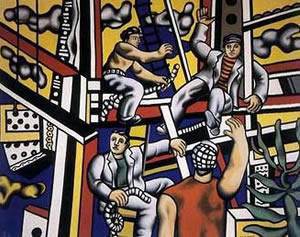
Philip Guston, Web, 1975, ink on paper. © Estate of Philip Guston, Courtesy of McKee Gallery, New York, private collection. Photo credit: Michael Korol, New York.

Philip Guston
Drawing Related to Zone (Drawing No. 19), 1954
Ink on paper, 44.5 x 59.1 cm (17 ½ x 23 ¼ in)
Private Collection
© Estate of Philip Guston
Courtesy McKee Gallery, New York
Photo Credit: Michael Korol, New York

Philip Guston
Untitled, 1950
Ink on parchment paper, 47.6 x 60.3 cm (18 ¾ x 23 ¾ in)
Private Collection
© Estate of Philip Guston
Courtesy McKee Gallery, New York
Photo Credit: Sara Wells, New York

Philip Guston
Untitled (Cherries), 1980
Ink and acrylic on board, 50.8 x 76.2 cm (20 x 30 in)
Private Collection
© Estate of Philip Guston
THE MORGAN LIBRARY & MUSEUM PRESENTS FIRST PHILIP GUSTON DRAWING RETROSPECTIVE IN TWENTY YEARS
Philip Guston: Works on Paper – May 2 through August 31, 2008
Source: Morgan Library and Museum
]]>
The extraordinary drawings of Philip Guston (1913–1980) are the subject of a major exhibition at The Morgan Library & Museum, on view from May 2 through August 31, 2008. Together with Jackson Pollock and Willem de Kooning, Guston is recognized as one of the most influential American artists of the twentieth century. The exhibition marks the first retrospective of his drawings in twenty years and the Morgan is the only American venue.
Organized by the KunstMuseum Bonn, and the Staatliche Graphische Sammlung Munich, in cooperation with the artist’s estate, Philip Guston: Works on Paper examines the importance of drawing throughout key periods of Guston’s career, from the mid-1940s to 1980. While the artist is primarily known for his paintings, his drawings occupy a special place in his oeuvre as they influenced new phases of creativity and served to articulate radically different approaches.
The Morgan Library & Museum’s presentation of the exhibition features more than one-hundred drawings, including many rarely seen works that were left in the artist’s studio after his death as well as major loans from museums and private collections.
“The Morgan Library & Museum is thrilled to be the only American venue for this outstanding exhibition,” said Morgan director William M. Griswold. “This is one of the Morgan’s first exhibitions devoted to a twentieth-century artist and Guston is one of the greats of the modern era. This show demonstrates the amazing range and versatility of his work. It is truly remarkable to see so many of his drawings together in one show.”
Guston was a prolific draftsman who often turned to drawing to explore new directions in his art before applying them to painting. Several times during the course of his career he stopped painting altogether to concentrate on drawing. Such phases mark the dramatic changes that characterized Guston’s art from figuration to abstraction and vice versa.
“Philip Guston’s work expresses the tensions and conflicts of the modern world with a sense of urgency that still resonates today,” said Isabelle Dervaux, curator of modern drawings at the Morgan. “The relevance of his work to this day can be seen in its wide influence on contemporary artists.”
In the 1950s, when Guston was a central figure of the abstract expressionist movement, he developed a form of abstract, linear drawings characterized by a great concern with structure and balance, in contrast with the more spontaneous gesture typical of the New York school. A prime example of his style during this period is Drawing Related to Zone (Drawing No. 19; 1954) which derives its wonderful rhythm from its balanced composition as well as from variations in the thickness and pressure of the ink strokes.
For a two-year period, from 1966 to 1968, Guston stopped painting and produced only drawings of startling economy. Even in his most abstract drawings, however, he did not exclude references to the real world. Simple forms evoke primitive renderings of common objects, as in Untitled (1967), where an oval shape can be read as a stone or a head. It was through the hundreds of drawings created during this period that Guston would find inspiration to move away from abstraction and embrace a figurative, almost cartoonlike imagery that would typify his work during the last decade of his life.
It was a transformation that shocked the art world in 1970, as Guston turned to depictions of everyday objects such as shoes, books, and irons. At the same time, disturbed by the social and political upheavals of the late 1960s, Guston addressed the violence of the contemporary world through images of hooded figures reminiscent of the Ku-Klux-Klan.
From the mid-1970s on, autobiographical references became more frequent in Guston’s drawings which included images of himself and his wife, Musa, often in situations reflecting the artist’s anxieties. In Web (1975), for instance, the two figures, half-hidden under a pile of shoes, are caught in a spider web. Guston’s late drawings combine allegorical imagery, dominated by body fragments and accumulations of detritus, with more direct evocations of simple objects from his surroundings, as in Untitled (Cherries, 1980).
Follow us on:


